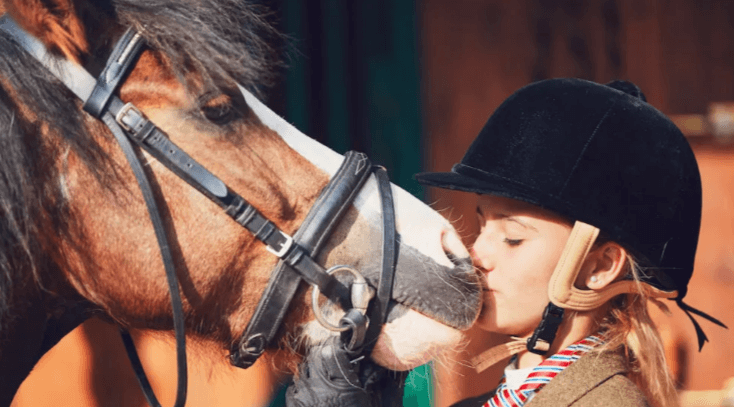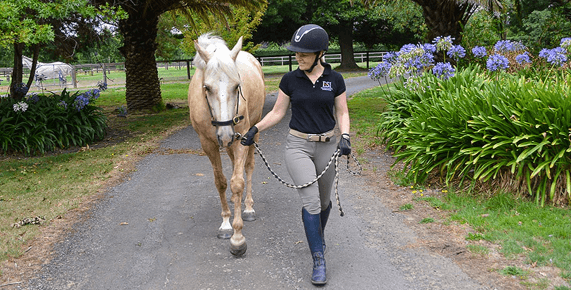What are the stages of training a young horse from ground work to riding?

Introduction
Training a young horse is a rewarding journey that requires patience, consistency, and knowledge. Understanding the stages of training from groundwork to riding is essential for building a solid foundation for your horse’s future performance and well-being. This article delves into the various stages of training a young horse, offering a comprehensive guide to help you navigate this exciting process.
Understanding the Basics of Horse Training
Horse training is built on a philosophy of trust, respect, and consistency. The key principles include understanding the horse’s natural instincts, using positive reinforcement, and progressing at a pace suitable for the individual horse. A successful training journey is marked by patience and the ability to read and respond to the horse’s needs.
Choosing the Right Horse for Training
Selecting the right young horse is crucial. Considerations include the horse’s breed, temperament, and health status. Certain breeds may be more suited to specific disciplines, and a horse’s natural disposition can influence the ease and success of training.
Preparation Before Training
Before beginning training, ensure your horse is in good health. Regular veterinary checks, vaccinations, and a balanced diet are essential. Additionally, gather all necessary equipment, including halters, lead ropes, saddles, and bridles, ensuring they fit properly and are in good condition.
Establishing Trust and Bonding
Building a relationship with your horse is the foundation of effective training. Spend time with your horse, engaging in activities that promote trust, such as grooming and hand-feeding. Trust exercises, like gentle handling and consistent routines, help establish a strong bond.
Groundwork Fundamentals
Groundwork is the cornerstone of horse training. It involves teaching basic commands like “walk,” “trot,” and “stop” through leading and handling exercises. Groundwork helps your horse understand your cues and builds the foundation for more advanced training.
Desensitization Techniques
Desensitization is about reducing a horse’s fear responses to various stimuli. Introduce your horse to different objects and environments gradually, using calm and reassuring methods. This helps your horse become more confident and less reactive to new experiences.
Lunging a Young Horse
Lunging is a valuable technique for exercising and training a young horse. It involves working the horse in a circle on a long line, teaching them to respond to voice commands and body language. Lunging helps build fitness, balance, and responsiveness.
Teaching Respect and Manners
Establishing boundaries and teaching respect are vital. Use clear, consistent cues to set expectations for behavior. Reinforce positive behavior with rewards and address negative behavior calmly and promptly to ensure your horse understands acceptable conduct.
Introducing Tack Gradually
Introducing tack is a significant step. Start with a simple halter and bridle, allowing your horse to become accustomed to the feel and weight. Gradually introduce the saddle, ensuring each stage is comfortable and stress-free for the horse.
Saddle Training Basics
Begin saddle training by placing the saddle on the horse’s back without fastening it. Allow the horse to get used to the sensation. Gradually progress to securing the saddle and walking the horse with it on, ensuring they are comfortable before moving on to more advanced steps.
Long Lining and Ground Driving
Long lining and ground driving are excellent techniques for teaching steering and control. These methods involve guiding the horse from behind using long reins, helping the horse understand rein pressure and develop coordination without a rider’s weight.
First Backing Sessions
The first backing sessions involve introducing the horse to the weight of a rider. Start with a lightweight rider and keep sessions short and positive. The goal is to ensure the horse remains calm and responsive with a rider on its back.
Building Confidence Under Saddle
Gradually extend the duration of riding sessions, reinforcing positive behavior with praise and rewards. Encourage the horse to move forward confidently, using gentle cues to guide and direct. Consistency and patience are key during this phase.
Advanced Groundwork Techniques
Once basic groundwork is mastered, introduce more advanced techniques such as liberty work and intricate commands. These exercises challenge the horse’s agility and responsiveness, building a deeper connection and enhancing communication.
Riding in the Arena
Riding in the arena provides a controlled environment for training. Start with basic riding exercises, focusing on balance, steering, and pace. Practice arena etiquette, ensuring your horse is comfortable and responsive to your cues.
Trail Riding Introduction
Introducing your horse to trail riding involves preparation and patience. Begin with short, easy trails, gradually increasing the difficulty. Ensure your horse is familiar with various terrains and remains calm in different environments.
Building Endurance and Stamina
Conditioning exercises are essential for building your horse’s endurance and stamina. Incorporate varied workouts, including hill work, long rides, and interval training, to improve fitness and prepare your horse for more demanding activities.
Introducing Advanced Riding Skills
As your horse becomes more confident, introduce advanced riding skills such as collection, lateral movements, and transitions. These skills enhance the horse’s agility, strength, and responsiveness, preparing them for higher-level performance.
Addressing Behavioral Issues
Behavioral issues are common in training. Identify the root cause of problems such as bucking or refusal, and use corrective techniques to address them. Patience and consistency are crucial in overcoming these challenges.
Health and Nutrition Considerations
A balanced diet and proper nutrition are vital for a young horse’s development. Consult with a veterinarian or equine nutritionist to ensure your horse’s diet meets their needs, including appropriate supplements and regular health checks.
Monitoring Progress and Setting Goals
Keep a training log to monitor your horse’s progress and set achievable goals. Regularly review and adjust your training plan based on your horse’s development and performance, ensuring continued growth and improvement.
Understanding Horse Psychology
Understanding your horse’s psychology aids in effective training. Recognize their learning styles, behavioral cues, and emotional responses. This knowledge helps tailor your training approach to suit your horse’s individual needs.
Common Mistakes to Avoid
Avoid common training mistakes such as rushing the process, inconsistent cues, and lack of patience. Addressing these pitfalls early ensures a smoother training journey and better outcomes for your horse.
Incorporating Fun Activities
Incorporate fun activities into your training routine to keep your horse engaged and motivated. Games, obstacle courses, and varied exercises add interest and prevent boredom, promoting a positive training environment.
Training for Specific Disciplines
Tailor your training approach to suit specific disciplines such as dressage, jumping, or western riding. Each discipline requires unique skills and techniques, so adapt your training to meet these demands.
Continual Learning and Improvement
Horse training is a lifelong learning process. Stay updated with the latest training methods, attend workshops, and seek advice from experienced trainers. Continuous improvement ensures you provide the best training for your horse.

Building a Lifetime Partnership
Training is just the beginning of a lifelong partnership with your horse. Maintain trust, respect, and consistent training throughout your horse’s life. This approach fosters a strong, enduring bond and ensures a happy, healthy horse.
FAQs
What is the best age to start training a young horse?
The ideal age to start training is around 2-3 years old, depending on the horse’s physical and mental maturity.
How long does it take to train a young horse?
Training duration varies, but basic training typically takes 6-12 months, with continual learning and reinforcement over the horse’s lifetime.




